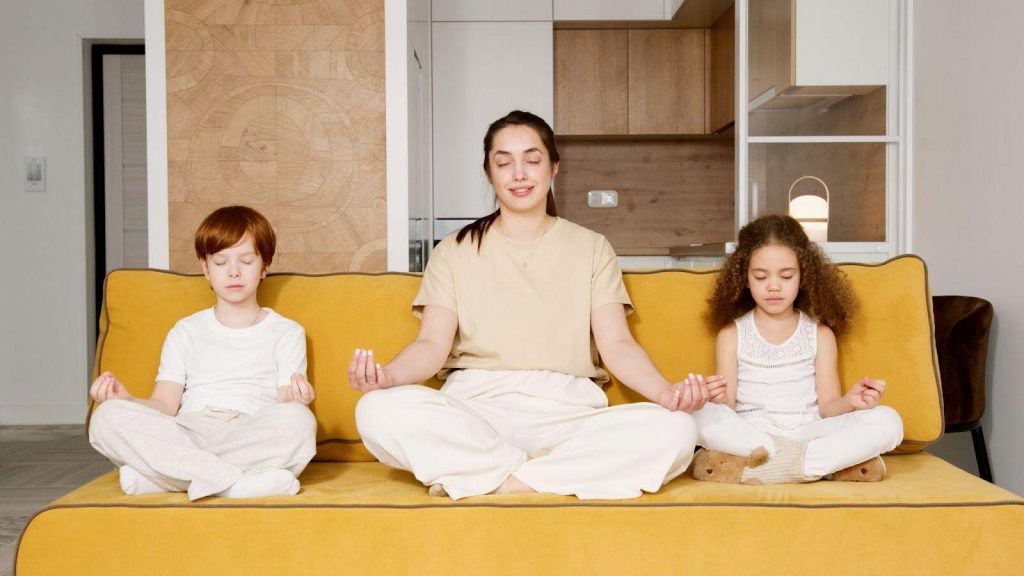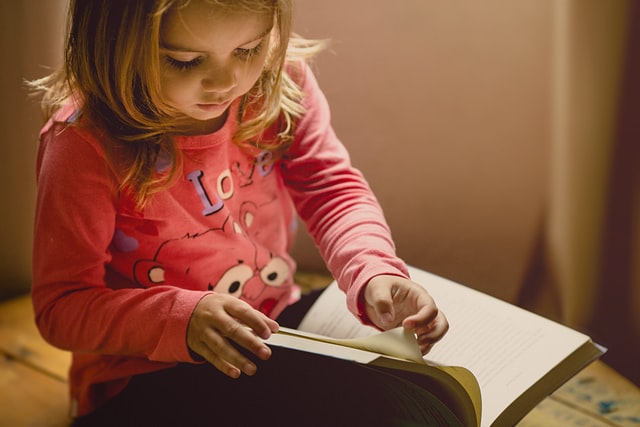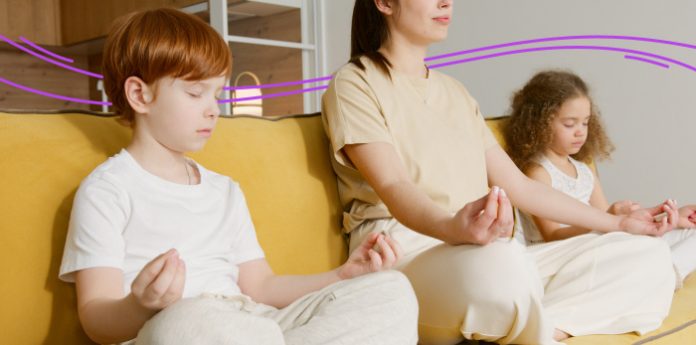We live in a fast-paced world. Our schedules are full, and it always seems like there is not enough time in the day. Mindfulness for kids can be a great way to help children relax and manage their emotions.
Math & ELA | PreK To Grade 5
Kids see fun.
You see real learning outcomes.
Watch your kids fall in love with math & reading through our scientifically designed curriculum.
Parents, try for free Teachers, use for free
It may also help them deal with stress, manage difficult emotions, improve their attention and focus, increase their self-awareness. Mindfulness also enhances their ability to make good decisions, regulate their behavior, and improve their ability to relate well to others.
We also live in an anxious culture where people are often worried about their appearance, relationships, and performance at work or school. For children, it can be hard to slow down, take a break from technology or be still. Of course, kids get stressed.
What is Mindfulness?

Mindfulness is the practice of intentionally focusing on the present moment. It is a state of mind that focuses on the present while calmly acknowledging and accepting feelings, thoughts, and bodily sensations.
Mindfulness for kids has been shown to help them with all kinds of challenges – ADHD, autism spectrum disorders, anxiety, and depression. Often kids who struggle in these areas have difficulty regulating their emotions and behaviors. Mindfulness for kids can help with self-regulation by assisting them to be more aware of what they are feeling without becoming reactive or overwhelmed to respond in more appropriate ways.
10 Effective Activities to Enhance Mindfulness in Kids

We can help ourselves and children develop by paying close attention to our present experience with acceptance. This is called mindfulness, a skill that helps us cope with stress and improves our mood, relationships, and resilience.
It’s not difficult or time-consuming to improve mindfulness for kids. You can take a few minutes every day to engage in these activities with your children.
Here are ten activities to improve mindfulness for kids:
1. Feelings Cards
With an adult’s guidance, children can use feelings cards to identify how they feel at different times of the day or in different situations. They can also use the cards to discuss what others might think in certain conditions.
2. Mindful Breathing
Simply focusing on breathing helps children relax and concentrate by reducing stress, anxiety, and other negative emotions. You can do this exercise together before bed or in the middle of the day when your child feels anxious about something that happened at school or is upset about a friend’s disagreement.
3. Mindful Eating
Encourage all family members to sit down together for at least one meal per day. Remind them not to let eating become an automatic process. Instead, ask them to notice how food tastes, its texture, the sounds they hear while eating, etc. Invite them to notice when they’re no longer hungry and stop eating.
4. Mindful Listening
Have everyone sit together quietly for 1 minute without talking or other distractions such as TV or music playing in the background. Then, invite them to share what they heard during this time — inside their bodies and outside in the environment around them.
5. Mindful Coloring
Coloring is an excellent way for children to express themselves creatively while practicing mindfulness. Many fun and beautiful mandalas are available online for adults and children alike. The lines of the mandala can serve as a focal point to keep your child’s attention and encourage mindful awareness.
6. Mindful Touching
Using their eyes closed, have your child feel different objects with one hand and try to guess what it is.
7. Play “I Spy”
“I-Spy” is a great game to encourage your child to be more mindful of their surroundings. In this simple game, one person looks around for an object within sight of others. Then he says, “I spy something…”, and gives clues about the thing by describing its color or shape. The other players need to guess what it is. The person who thinks correctly gets to go next!
8. Body Scan
Have children lay quietly on their backs and focus on their breathing for several minutes. Then have them focus on different parts of their body (feet, legs, abdomen, throat) and ask them to notice where they feel tight or relaxed.
9. Bubble Meditation
Purchase bubbles or make your own (1/2 cup water, 1/2 cup dishwashing liquid, one tablespoon glycerin). Have your child blow bubbles and try to touch each one before it pops. This exercise teaches kids to stay focused on one thing at a time.
10. The Five Senses Walk
This outdoor activity is great for young children who may not sit still for long periods. Have the child close their eyes and name five things they can hear, four things they can feel (have them touch their face or arms), three things they can see, two things they can smell, and one thing they can taste (have them lick their lips). This is a great way to get children to focus on the present moment and realize how much there is around them.
The Importance of Mindfulness for Kids

Kids need to learn how to be present at the moment and how to focus on what they are doing. While this may come naturally for some kids, many children need to be taught how to do this, especially with their distractions: social media, television, video games, etc. Parents must help children develop into emotionally healthy adults who can handle life’s ups and downs without becoming overwhelmed or falling apart.
Mindfulness for kids helps them develop an awareness of their bodies, thoughts, and emotions. It increases the ability to learn from experience and enhances impulse control. Being mindful also leads to more positive emotions, better concentration, and improved decision-making.
Mindfulness for kids helps children learn to regulate their emotions and behavior. Because it teaches self-control and self-awareness, it can help young people who struggle with stress management or emotional control, such as those with ADHD or anxiety.
Practical Tips to Teach Mindfulness for Kids

Mindfulness emphasizes focusing on the present. It’s a widespread practice in adult meditation and can help people live more mindful lives. While mindfulness is common among adults, it can also benefit children. Mindfulness for kids can help them recognize their emotions and learn how to manage them from a tender age.
But how do you teach mindfulness to kids? It doesn’t have to be complicated! These tips can help you start improving mindfulness for kids so they can enjoy its benefits.
1. Know when to start
The ideal time to teach your child mindfulness is between the ages of 6 and 10 because they have developed the ability to pay attention but are not yet too self-conscious.
2. Be a Role Model
Kids learn important lessons from their parents and caregivers every day. To teach your child mindfulness, try practicing it yourself. Use it as a strategy when you’re feeling angry or anxious, and explain that this is what you’re doing. That way, your child will learn what mindfulness is and how to do it themselves.
3. Practice Meditation Together
Meditation is a good way for adults to practice mindfulness, so why not practice mindfulness for kids? Meditation can be as simple as sitting together quietly for five minutes or can include guided meditation or music. You can even try various types of meditation and see which ones your child prefers!
4. Make it Fun
Mindfulness doesn’t have to be serious all of the time (although it can be). Make funny faces, listen for sounds only elephants could hear, and notice the color of the sky as the sunsets. Be creative! Mindfulness is about paying attention to the minute details, so anything can be a mindfulness exercise if you do it with awareness.
5. Read books about mindfulness together.
An excellent way to introduce a topic is through bedtime stories, so look for books about mindfulness that you can read with your child or children. You can also find coloring books on the subject and even board games that help to teach kids about this concept.
Bottom Line
We live in an age where our minds seem more and more stretched. With school, extracurricular activities after school, and digital distractions, most kids don’t have a chance to take a break from their seemingly hectic lives. And this is what mindfulness teaches: skills to cope with everyday stress. Skills to stop you from getting carried away with negative thoughts.
Kids are dealing with schoolwork and fitting in with friends, and they’re learning how to assert themselves while still respecting others. In the midst of all that, they have to learn how to deal with the many complicated feelings that come up every day — frustration, anger, sadness, etc.
To start your kids off on their path to a successful life filled with compassion, independence, and joy, you should introduce mindfulness for kids. At SplashLearn, you can find a chock-full of tips, techniques, and resources for adults to help their children be more mindful through fun activities, games, and other valuable information.
Frequently Asked Questions
What are mindfulness exercises?
Mindfulness is a practice that helps you focus on being extremely aware of what you see and feel in the moment, without interpretation or judgment. Practicing mindfulness involves breathing methods, guided imagery, and other practices to relax the body and mind and help reduce stress.
At what age should you start mindfulness for kids?
You can introduce a toddler to mindful breathing from around the age of 2 or 3 years old. It’s essential to have realistic expectations, though – they may not get the technique exactly right just yet, they will improve with practice.
Why is mindfulness so important?
Mindfulness practices can help us regulate our emotions and decrease stress, anxiety, and depression.
How can mindfulness help students?
Mindfulness can reduce the adverse effects of stress and increase students’ ability to stay engaged, focused academically, and avoid behavior problems.
























